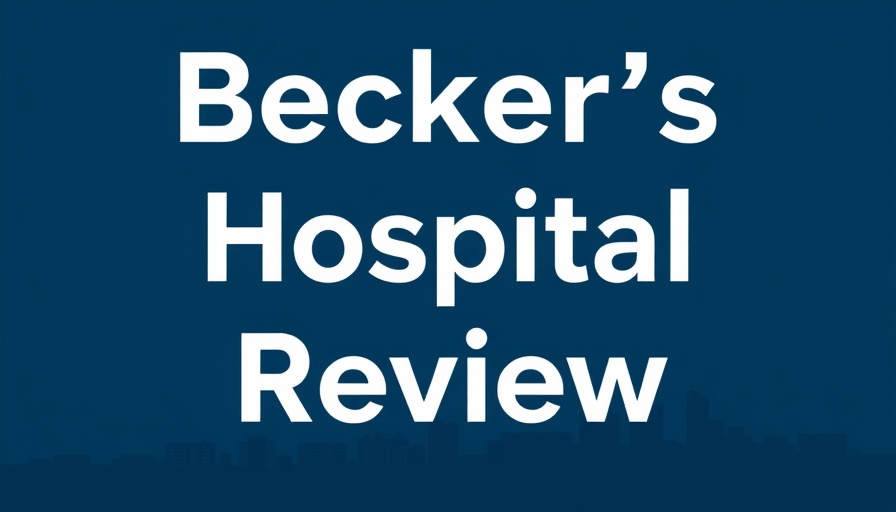
Revolutionizing CAUTI Prevention in Pediatric Care
At Children’s Healthcare of Atlanta, a remarkable achievement has unfolded in the fight against catheter-associated urinary tract infections (CAUTIs). By implementing an innovative strategy focused on pediatric patients in the intensive care unit (PICU), the healthcare team successfully cut CAUTI rates to zero and has maintained that impressive record for over 500 days. This case study serves as an illuminating example for healthcare providers striving to enhance patient safety and care quality.
The Challenge: Limited Pediatric Guidelines
National guidelines for preventing CAUTIs often stem from adult care practices, neglecting the unique needs of the pediatric population. As experts frequently note, children are not just ‘small adults’; their physiological and medical needs significantly differ. Recognizing this gap, the team at Children’s Healthcare began exploring tailored interventions.
The No Diaper Zone: A Game-Changer for Infection Control
Through collaborative huddles involving a dedicated task force, symptoms presented by PICU patients with CAUTIs were analyzed. A disturbing connection between liquid stool incidents and catheter contamination was established. The innovative solution? To initiate a No Diaper Zone within the PICU. Patients utilizing indwelling urinary catheters would no longer wear traditional diapers. Instead, they were placed on absorbent pads with diligent monitoring every two hours during routine checks. This change not only prevented stool contamination but also promoted higher standards of hygiene.
Enhancing Monitoring with Advanced Tools
In addition to the No Diaper Zone, the introduction of a new urine monitoring system further optimized care. The team replaced outdated gravity-dependent collection bags with advanced systems that utilized gentle suction and one-way valves for continuous urine flow. This new technology ensured accurate and real-time urine output data, represented digitally for healthcare professionals to access at a glance. Such innovations exemplify the potential for healthcare automation in improving patient outcomes.
Impressive Outcomes and Future Implications
The results of these interventions are staggering. In 2020, the CAUTI rate in the PICU was 3.13 per 1,000 catheter days. It declined by 22% in the first year following the changes and achieved an incredible zero rate in 2023. Moreover, since July 2022, the pediatric unit has experienced a streak of 527 days without any CAUTI events. Such achievements highlight the value of innovation in clinical practices and the potential for replication across various healthcare settings.
The Importance of Sustainable Practices in Healthcare
For independent physicians and other healthcare providers, this case offers valuable lessons in infection prevention strategies. As providers assess their practices, adopting sustainable and innovative approaches not only enhances patient care but may also result in significant cost savings through improved operational efficiency. For instance, by reducing infection-related complications, healthcare systems can optimize practice revenue through Medicare reimbursement for preventative measures, and minimize losses due to insurance underpayments.
Actionable Insights for Healthcare Providers
Healthcare professionals can draw numerous lessons from Children’s Healthcare of Atlanta’s success. First, revisiting and refining existing practices through collaboration and innovative thinking can yield profound benefits in patient care. Utilizing advanced medical technology not only modernizes practices but also enhances patient monitoring and compliance. Secondly, fostering a culture of continuous improvement can motivate staff engagement, ultimately leading to better health outcomes.
Looking Forward: Future Trends in Pediatric Care
As healthcare continues to evolve, the implications of this case extend beyond immediate practice changes. The integration of telehealth revenue opportunities, remote therapeutic monitoring (RTM) programs, and automated patient engagement tools represents the future of personalized medicine. Staying ahead of trends in healthcare automation will be crucial for independent pharmacies and practices aiming to thrive in a competitive environment while ensuring high-quality care for patients.
The journey to safer pediatric care has only just begun. By prioritizing patient safety through innovative solutions, we can build a healthier future for our children. Take proactive steps towards incorporating best practices that focus on prevention and automation — your patients deserve it!
 Add Row
Add Row  Add
Add 




Write A Comment